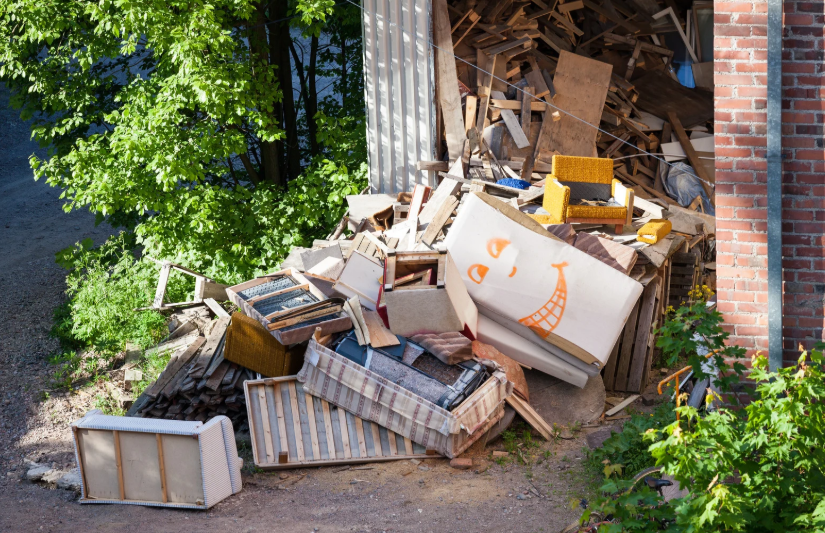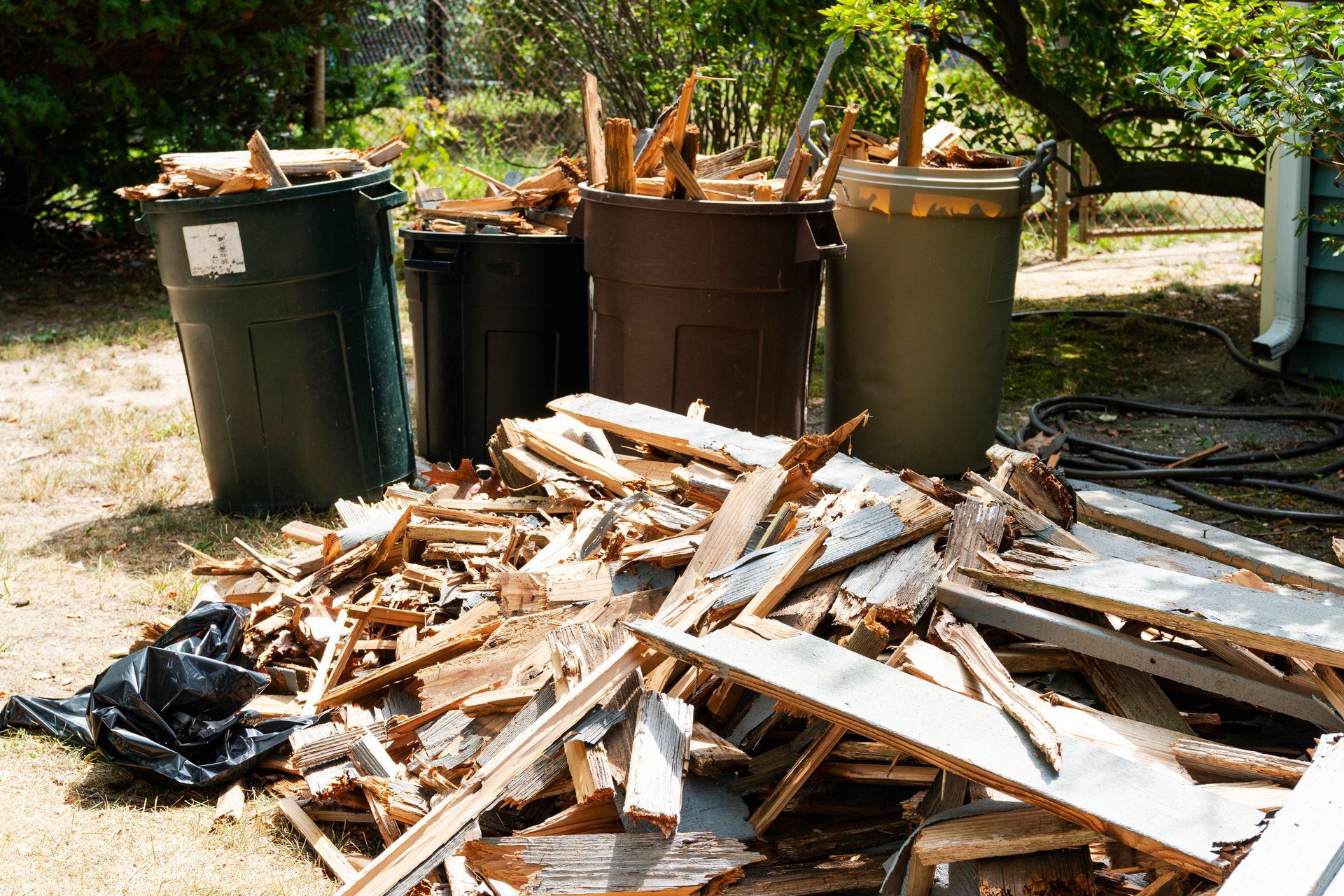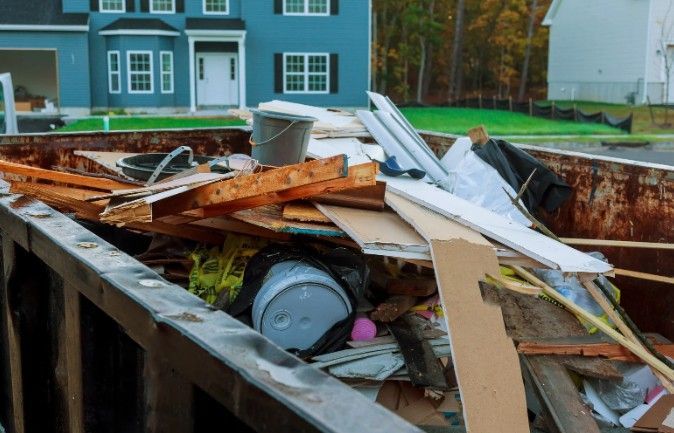Warehouse Cleanout Augusta Tips for Maximum Efficiency
Cleaning out a warehouse in Augusta isn’t just a task—it’s a mission. Whether you're reclaiming square footage, preparing for a renovation, or transitioning to a new facility, an efficient warehouse cleanout can save more than just time; it can boost productivity, enhance safety, and even increase profitability. Yet, without a clear plan and the right resources, the entire process can turn chaotic. Here, we delve deep into strategic insights that make warehouse cleanouts more effective, ensuring you avoid the common pitfalls and capitalize on every square foot of reclaimed space.
The Planning Phase: Start with Clarity, Not Chaos
Every great warehouse cleanout begins long before the first piece of debris is removed. It starts with vision. Why are you cleaning out the space? Is it to streamline operations, meet safety regulations, or make way for new inventory? Establishing a goal sets the tone for every decision that follows. Once that objective is clear, it’s time to sketch a detailed plan.
Begin by auditing the warehouse. Walk through the entire facility, noting down areas that require attention. Don’t just look at visible clutter; evaluate unused shelving, forgotten corners, and long-neglected inventory. Categorize materials into items to keep, recycle, donate, or dispose of. This step prevents confusion on cleanout day.Assign roles early on. Whether it’s in-house staff or third-party help, everyone should know their responsibilities. Define timelines, allocate resources, and create safety checklists to avoid injuries during the process. This structured approach helps transform the cleanout from a messy chore into an efficient operation.
Inventory Management: Decide What Stays and What Goes
Warehouses have a knack for collecting forgotten inventory. Old parts, obsolete products, and broken equipment can lurk for years, eating up valuable space. An essential part of any cleanout is confronting these hidden hoarders.
Start by tagging every item. Colored labels work wonders: green for keep, yellow for re-evaluate, red for discard. Bring your team into this process—different departments might have different needs or insights about certain equipment or materials.Think strategically. Does keeping that 1997 forklift make sense? Probably not. Outdated machinery may cost more in repairs than replacement. Unused stock can be donated or liquidated. Streamlining your inventory isn't just about space; it's about smarter logistics moving forward.

Hazard Awareness: Don’t Just Toss It
Not everything in a warehouse can be thrown into the dumpster. Chemicals, electronic waste, batteries, and heavy machinery come with disposal guidelines. Local ordinances in Augusta regulate the handling of hazardous materials. Ignoring these can lead to hefty fines or environmental hazards.
Before cleanout day, list all items that may require special disposal. Partner with certified hazardous waste handlers if needed. Certain types of debris, such as old paint, oil, or industrial solvents, must be managed with care. If you’re not sure how to handle something, reach out to local waste authorities to avoid missteps.
Recycling Opportunities: Give Items a Second Life
A warehouse cleanout doesn’t mean sending everything to the landfill. Many items can be recycled, reused, or even sold. Scrap metal, broken pallets, cardboard boxes, and outdated office furniture might still hold value. Look for local recycling centers that accept industrial materials.
Additionally, explore donation channels. Nonprofits often welcome donations of office equipment, surplus supplies, or gently used furniture. Some organizations may even pick up the items themselves, lightening your load. Not only does this reduce waste, but it also reflects positively on your company’s commitment to sustainability.
Equipment and Manpower: Use the Right Tools
Attempting to clean out a massive warehouse with minimal equipment is like trying to shovel snow with a spoon. The right tools can make the job smoother and faster. Think pallet jacks, forklifts, dumpsters, utility carts, gloves, and protective gear.
Hire professionals if necessary. Some cleanouts are simply too large or complex to handle in-house. Experienced teams bring not only labor but also strategy. They know how to dismantle large racking systems, haul heavy debris, and navigate tight schedules without compromising safety. Manpower planning matters too. A small crew might take days to finish what a larger, more organized team could complete in hours. But don’t just go for numbers—skill and coordination are just as important.
Safety Protocols: Protect Your People
In the hustle to clear clutter, don’t compromise on safety. Warehouse cleanouts in Augusta can pose a range of hazards—from heavy lifting injuries and exposure to hazardous materials to slip-and-fall incidents and machinery-related accidents. Every person involved in the process should undergo basic safety training to understand proper procedures, emergency responses, and equipment handling. Ensure that all workers wear essential personal protective equipment (PPE), including gloves, hard hats, steel-toe boots, safety goggles, and high-visibility vests. Maintain well-stocked first aid kits and place them in easily accessible areas throughout the facility. Emergency exits must be clearly marked, unobstructed, and known to all employees.
Use appropriate signage to mark hazardous zones and guide traffic, especially when forklifts or other heavy machinery are operating. Lockout/tagout procedures should be followed during equipment maintenance to prevent accidental startups. Regularly review OSHA safety guidelines and audit your practices to ensure they align with national safety standards. In Augusta, workplace safety is not optional—it’s a community priority. Taking proactive steps protects your team, preserves your reputation, and keeps operations running without costly disruptions.
Time Management: Work Smarter, Not Harder
One of the biggest challenges in a warehouse cleanout is managing time. Without a defined schedule, tasks linger, progress stalls, and deadlines drift out of reach. Map out a timeline that breaks the cleanout into phases: planning, sorting, removal, recycling, and final cleaning.
Build in buffer time. Unexpected challenges will arise—weather delays, missing equipment, or disposal site closures. Having slack in your schedule keeps stress at bay.Also, consider doing the cleanout in off-hours or during low-traffic days to avoid disrupting operations. Many warehouses in Augusta operate on tight production timelines, and overlapping cleanouts with daily tasks can cause chaos.
Communication: Keep Everyone in the Loop
Even the most detailed cleanout strategy can fall apart without solid communication. Clear and consistent updates are the glue that holds a warehouse cleanout together from start to finish. Before the process begins, lay the groundwork with a kick-off meeting—outline the schedule, assign roles, and set expectations. During the cleanout, communication must be ongoing and dynamic. Use a mix of tools like whiteboards for visual tracking, walkie-talkies for instant updates, and group chats or apps for team-wide coordination. Scheduled briefings—morning huddles and end-of-day recaps—help keep everyone aligned on goals and progress.
Encourage open dialogue. Team members on the floor often notice safety issues, workflow snags, or equipment hiccups that higher-ups might overlook. Their input is invaluable. After the cleanout, don’t just pack up and move on. Hold a debriefing session. What went well? What caused delays? What should be done differently next time? Document these takeaways. They aren’t just reflections—they’re strategic insights that will sharpen your approach for future cleanouts and boost efficiency and safety long-term.
Final Cleaning and Inspection: Don’t Leave It Half-Done
Clearing the clutter is just one step—final cleaning and inspection are where true transformation happens. Once the space is cleared, conduct a deep clean that goes beyond basic tidying. Sweep and mop all floors thoroughly, scrub and sanitize high-touch surfaces, clean windows, and remove dust or debris from hard-to-reach corners, shelves, and especially ventilation systems. Don’t overlook spills or stubborn residues—they can pose safety risks or trigger issues during audits or tenant move-ins.
With cleaning complete, move on to a meticulous inspection. Scan for structural damage, water leaks, pest activity, or any maintenance issues that might have been hidden under piles of clutter. Document everything with photos, notes, and checklists. If needed, compile a repair log to track and prioritize fixes. This post-cleanout audit isn't just about compliance—it’s your roadmap to maintaining the warehouse in peak condition.Finally, consider rethinking your layout. With everything visible and accessible, it’s the ideal time to redesign shelving systems, traffic flow paths, and storage zones. This step can greatly enhance efficiency, safety, and overall productivity moving forward.
Document Disposal: Don’t Overlook Paper Trails
In bustling warehouse environments—particularly within logistics, distribution, or manufacturing—paper clutter can quietly pile up over the years. Invoices, shipping receipts, instruction manuals, safety documentation, and inventory logs often linger in corners, filing cabinets, or outdated storage rooms. Even as digital systems become more prevalent, many facilities still rely heavily on hard-copy records to support daily operations.
During a warehouse cleanout, take the opportunity to sort through these paper trails. Determine what truly needs to be archived for compliance or historical purposes, what should be securely digitized for future reference, and what must be permanently destroyed. Sensitive documents containing financial details, vendor agreements, or proprietary data should never be tossed carelessly. Instead, partner with certified shredding or document destruction services to ensure secure disposal.Proper handling of documentation not only creates physical breathing room but also enhances data security and regulatory compliance. By responsibly managing warehouse paperwork, you reduce risks of identity theft, information leaks, and audit failures—while also stepping closer to a streamlined, paper-light operation.
Conclusion
Warehouse cleanouts are more than a physical task—they’re a strategic opportunity. With the right mix of planning, manpower, safety, and sustainability, you can transform a cluttered mess into a productive asset. The key is to approach it not just as a one-time event, but as part of an ongoing effort toward operational excellence. And if you’re in Augusta, GA and seeking dependable support, connect with the professionals who specialize in reliable, efficient junk removal services tailored to warehouse needs.
For top-tier service and seamless execution, reach out to Hinkins Disposal. Located right here in Augusta, GA, they can be contacted at (706) 885-4032 or via email at Hinkinsdisposal@gmail.com. Your clean warehouse is just one call away.




